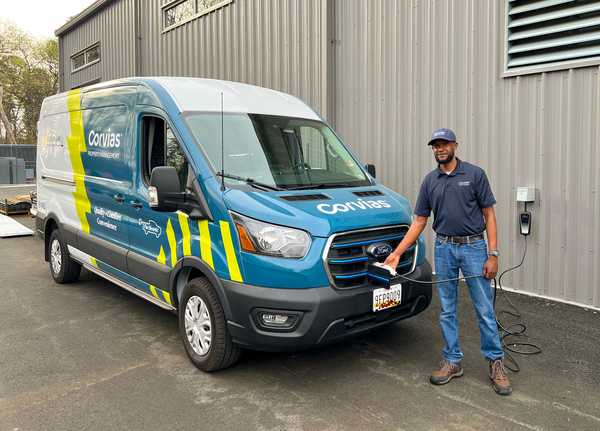
As the Director of Energy Development, former U.S. Army officer Justin Witty leads the strategic development, growth, and execution of projects within Corvias’ energy portfolio. Witty has a master's degree in urban planning and for over 10 years has been researching and leading military housing efficiency projects. His experience in the energy industry has led to great improvements in energy security and sustainability across many of our communities.
We sat down with Justin to learn more about the current state of the energy industry and its impact on the U.S. Army’s climate strategy. Here is a summary of that discussion:
What are Some Emerging Trends in the Energy Industry?
Residential and commercial buildings account for about 74% of the nation’s electricity use and about 33% of US greenhouse gas emissions. This indicates significant opportunity for energy efficiency and decarbonization. Because of this, the U.S. economy is accelerating in many directions related to sustainability and housing is really at the leading edge of many initiatives.
Homes are no longer just energy consumers but are becoming energy producers with advancements like solar PV (photovoltaic) panels, battery storage, electric vehicle (EV) charging, and smart home products.
In the future we will be able to manage devices like hot water heaters and use EV chargers to help manage our communities at scale as a Virtual Power Plant (VPP). These will help manage the homes energy in the background and increase efficiency for the home and the grid.
Tailoring Initiatives for the U.S. Army
As the Army’s partner, our chief mission is to enhance the well-being and safety of military residents’ homes and a critical component of that mission is the mitigation of climate risks and building infrastructure challenges.
All our energy initiatives are aligned with the Army’s Climate Strategy and help the local Garrisons achieve their resiliency goals by having renewable power generation on site with some battery storage to provide backup in an emergency or help reduce their peak load and lower utility bills.
For our partners, combining energy-efficient homes with solar power results in lower utility bills. This frees up funding to complete housing modernizations and community improvement projects. Witty also sees the potential of connected homes to monitor air quality, humidity, and water leaks in the future, which may enhance residents’ comfort and health.
What is Corvias Working on?

Corvias is developing solar PV generation systems to achieve net-zero housing communities, supporting the Army’s goal of 100% carbon pollution-free electricity. A significant project includes a $9.5 million grant with the Department of Energy to develop 4 megawatts (MW) of Battery Energy Storage Systems (BESS). Once completed this will provide the Army with some of the local generation and critical infrastructure resiliency that they are looking for.
We are developing more energy-efficiency projects that will improve the HVAC and water heater efficiencies of our homes with new geothermal heat pumps. These systems are more efficient than air-to-air systems as they leverage steady underground temperatures.
What’s Next in the Energy Industry?
Looking ahead, Witty is excited about the rapidly evolving domestic battery market and the significant development potential in EV charging infrastructure. As Corvias explores the intersection of transportation and housing, the goal is to provide seamless solutions for residents, supporting their transition to more efficient vehicle technology.
Thanks to leaders like Justin, Corvias remains at the forefront of energy trends, collaborating with the Department of Defense and higher education institutions to create energy-efficient housing and sustainable communities.
